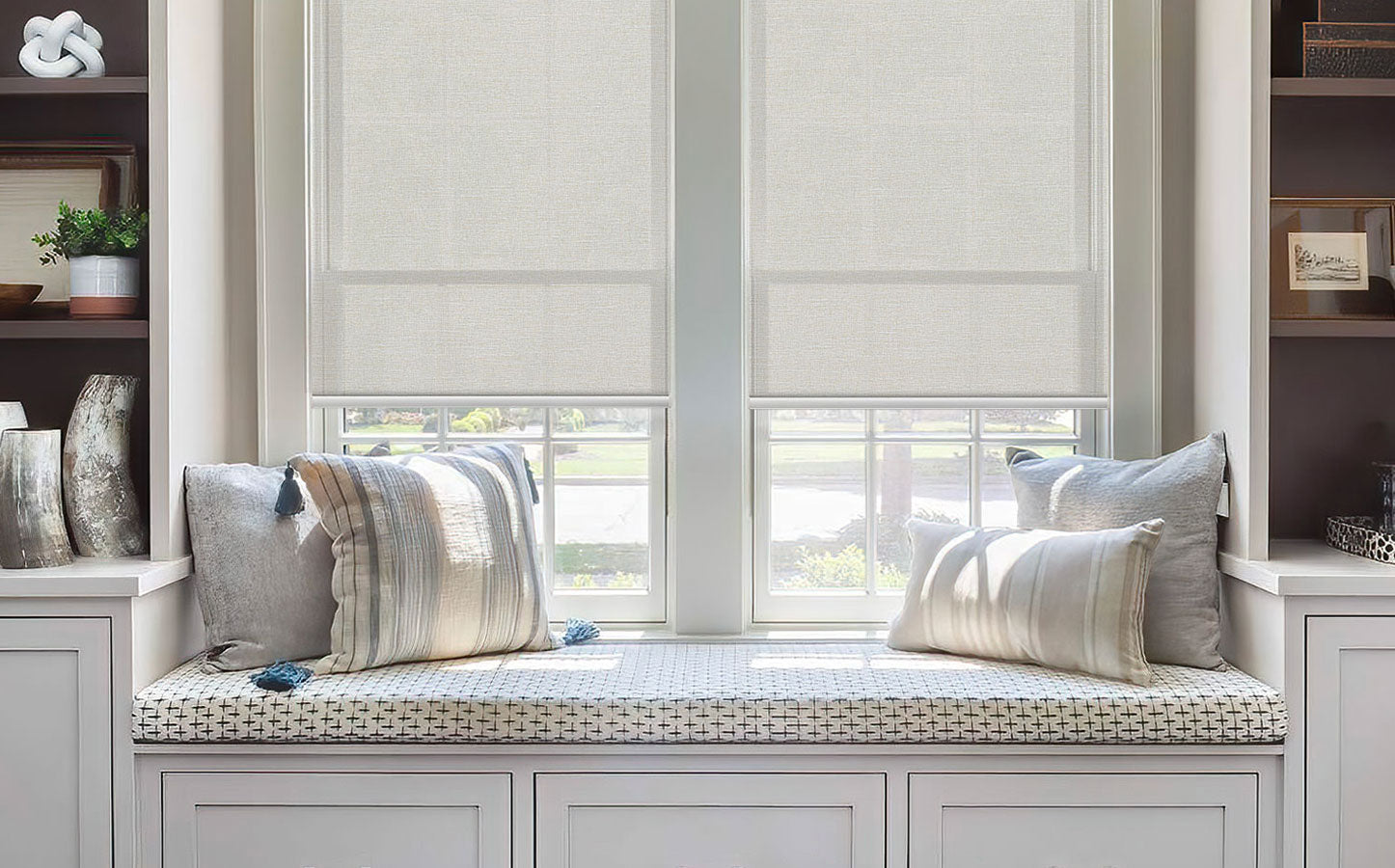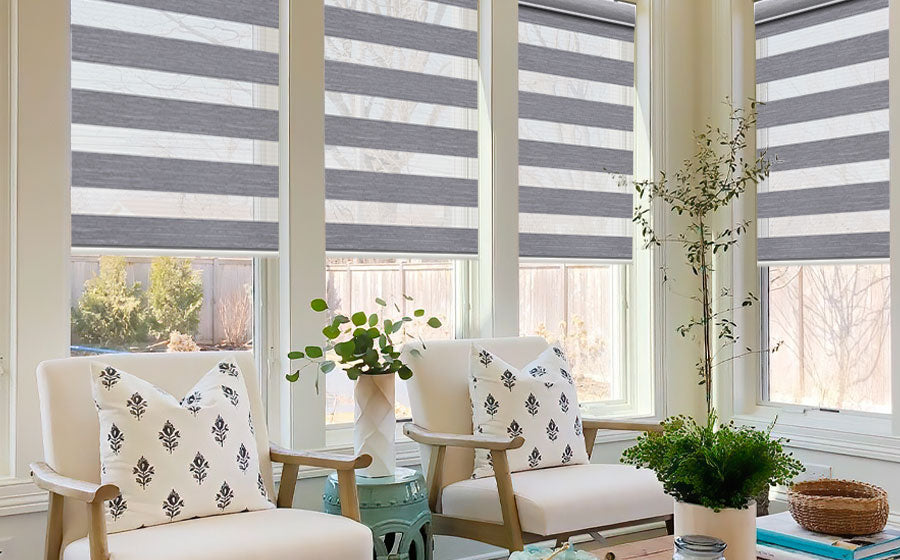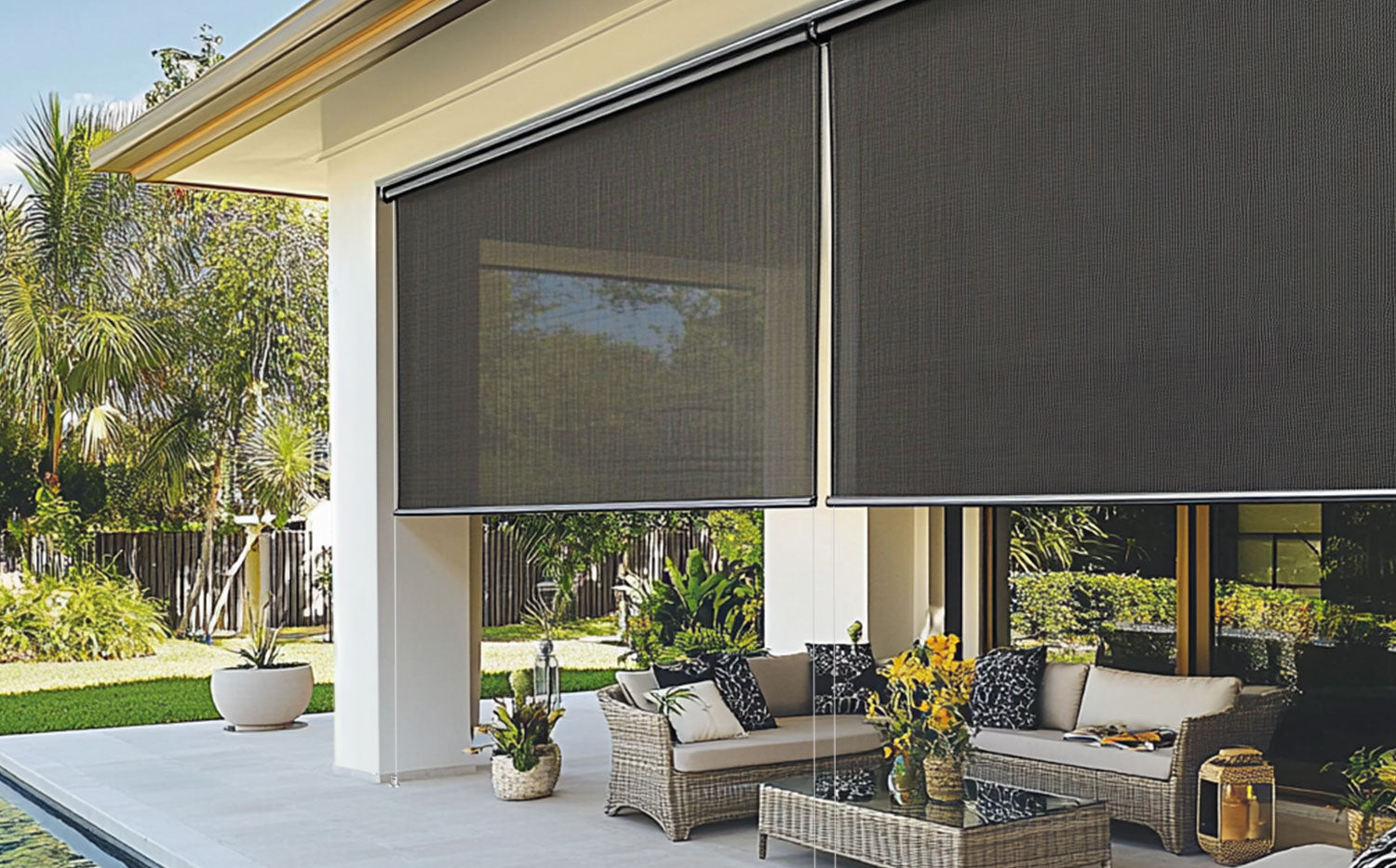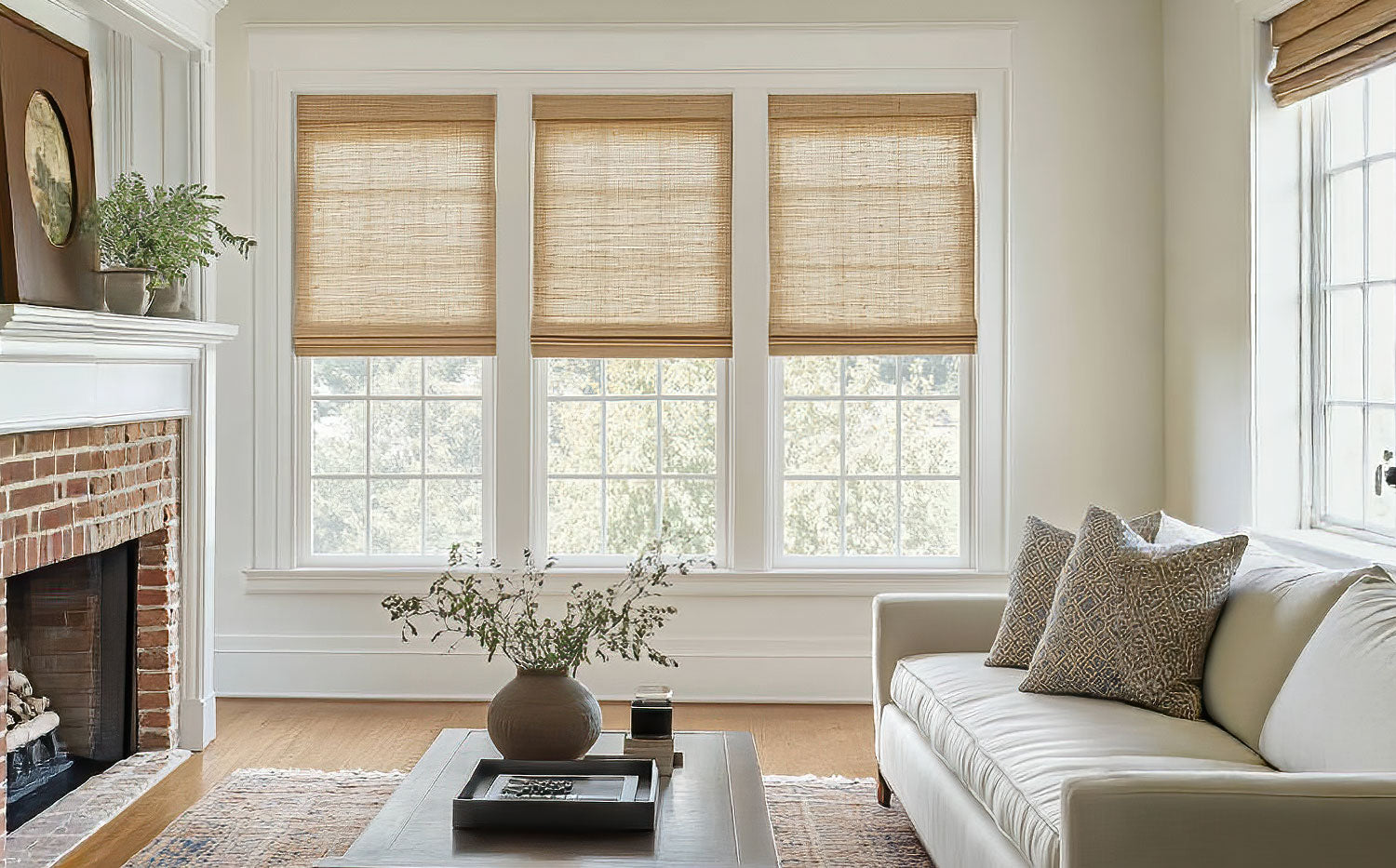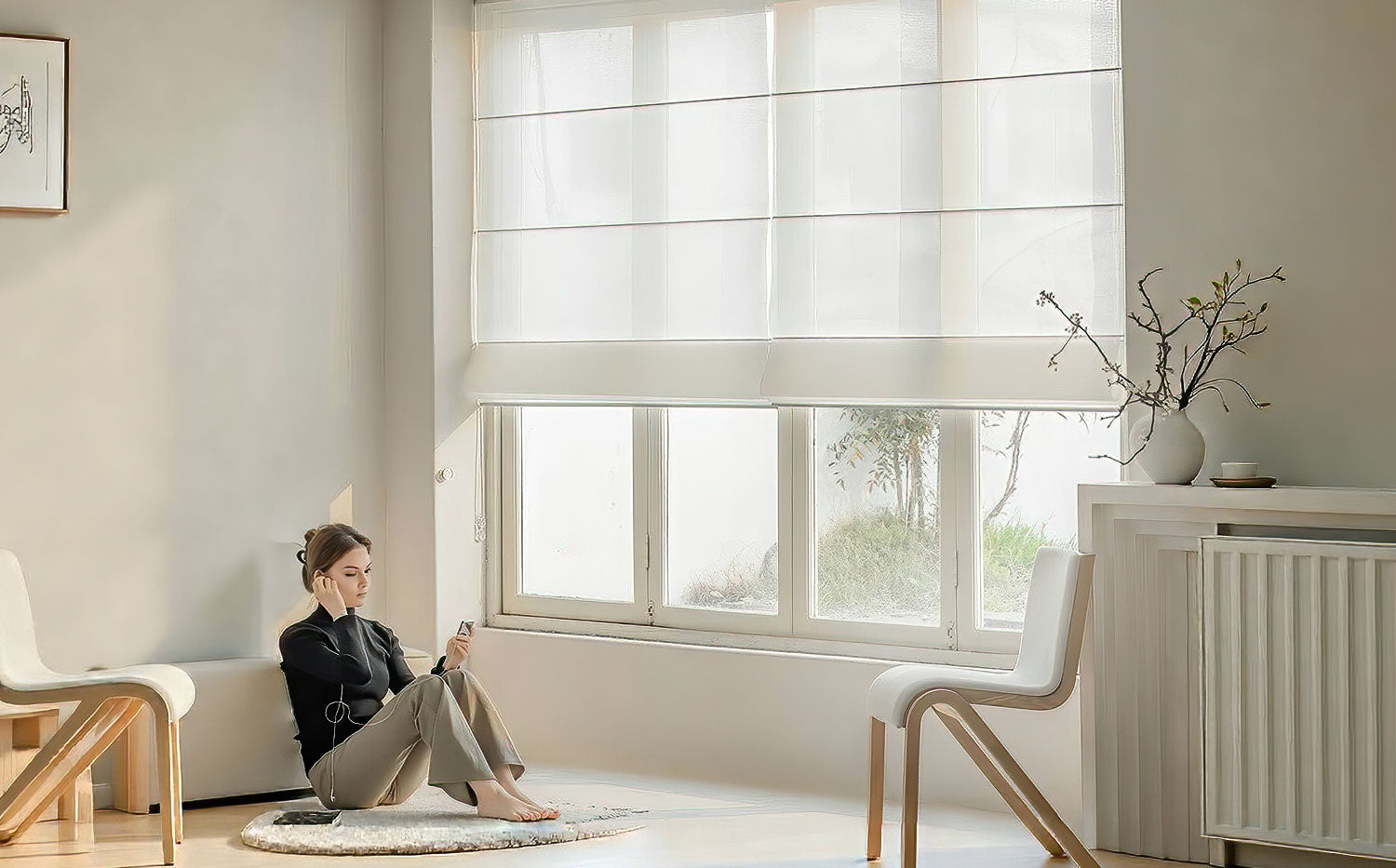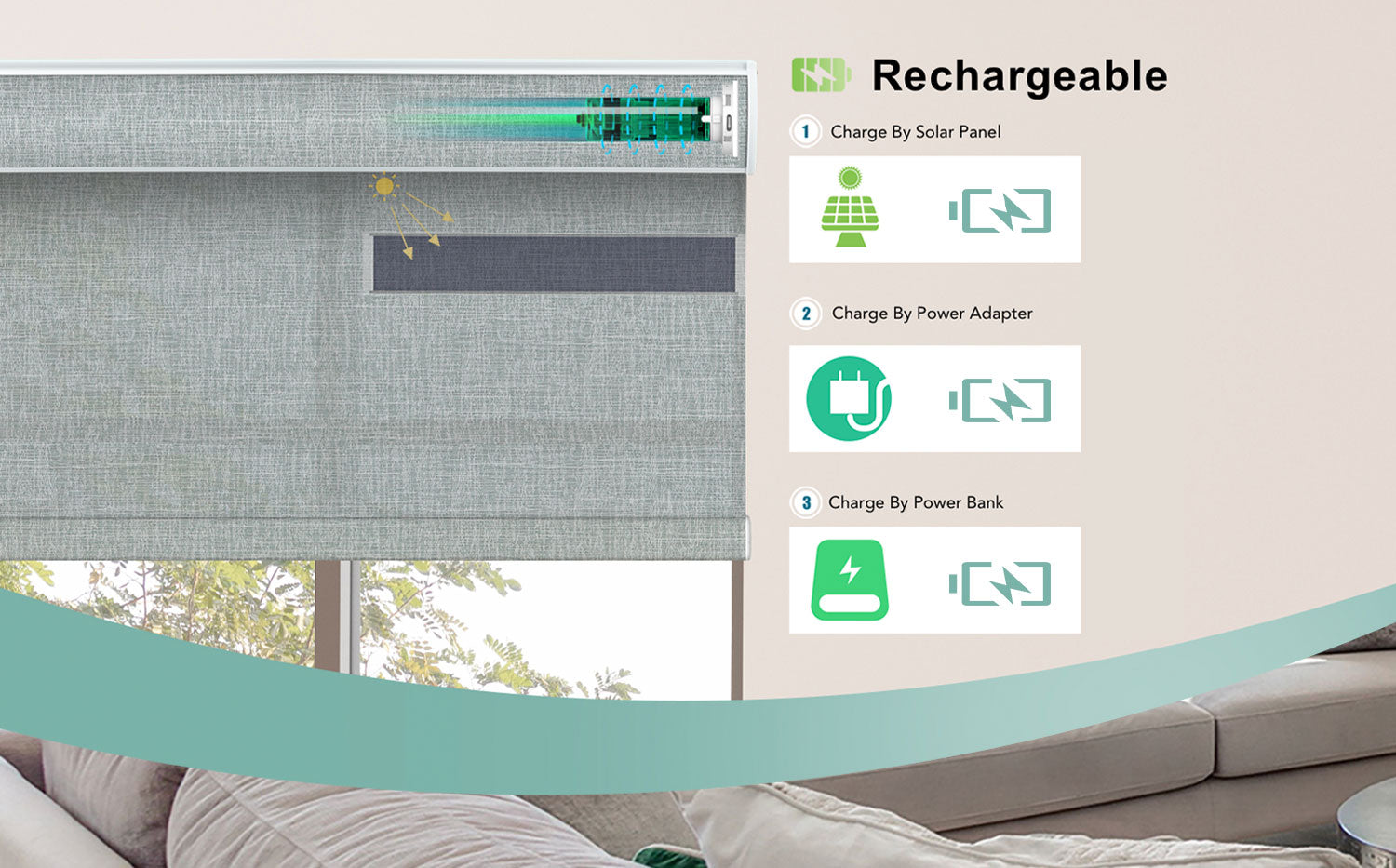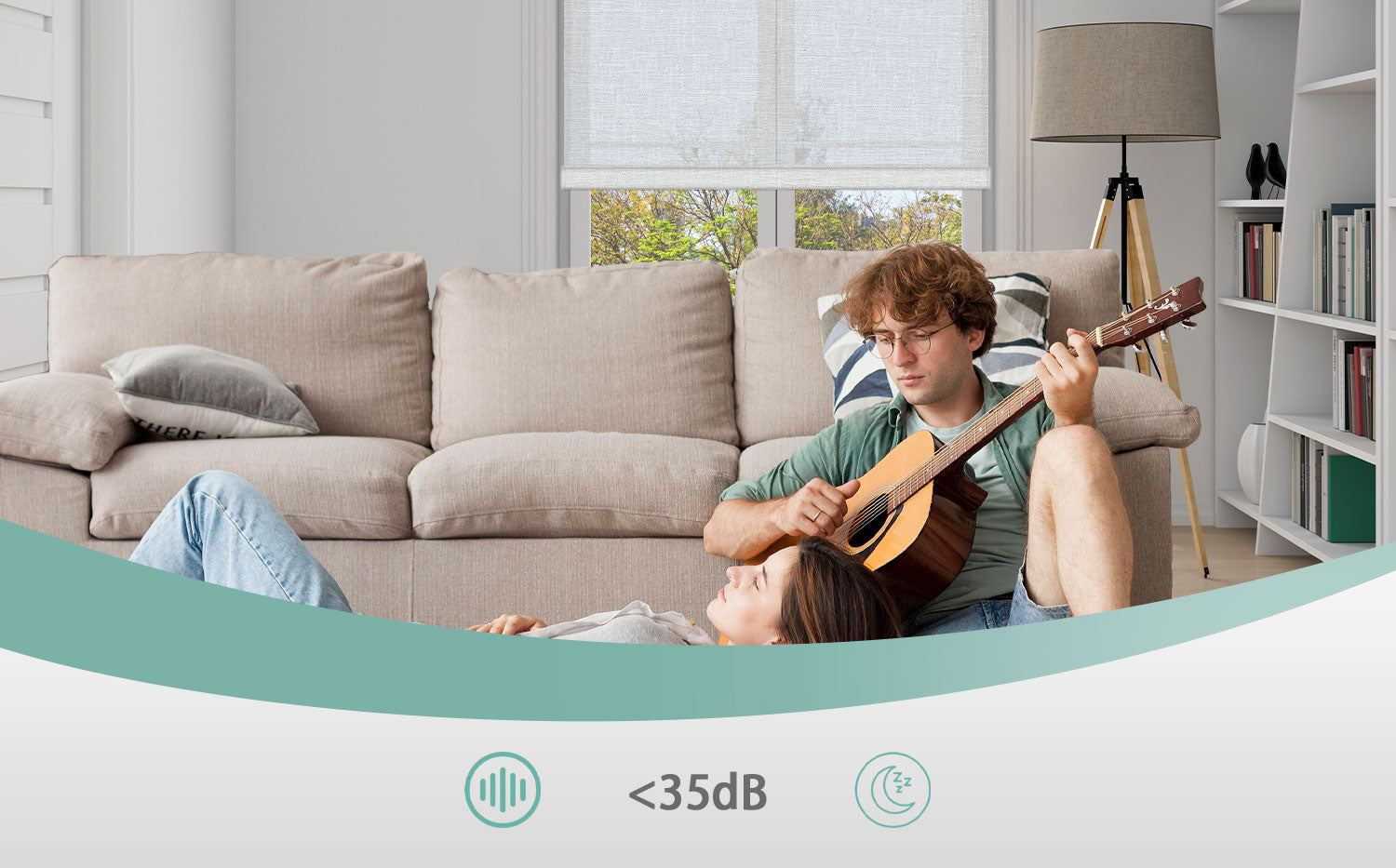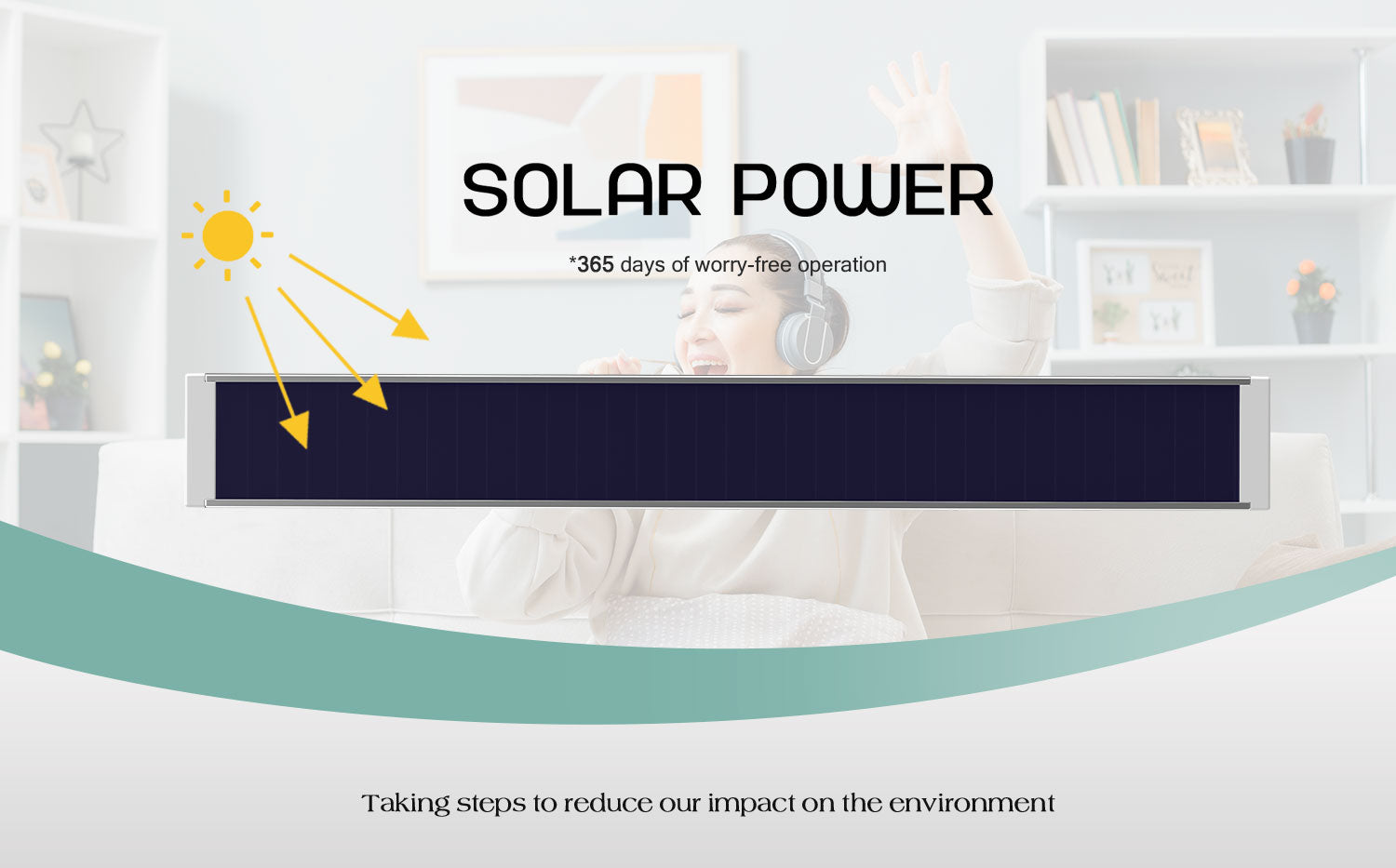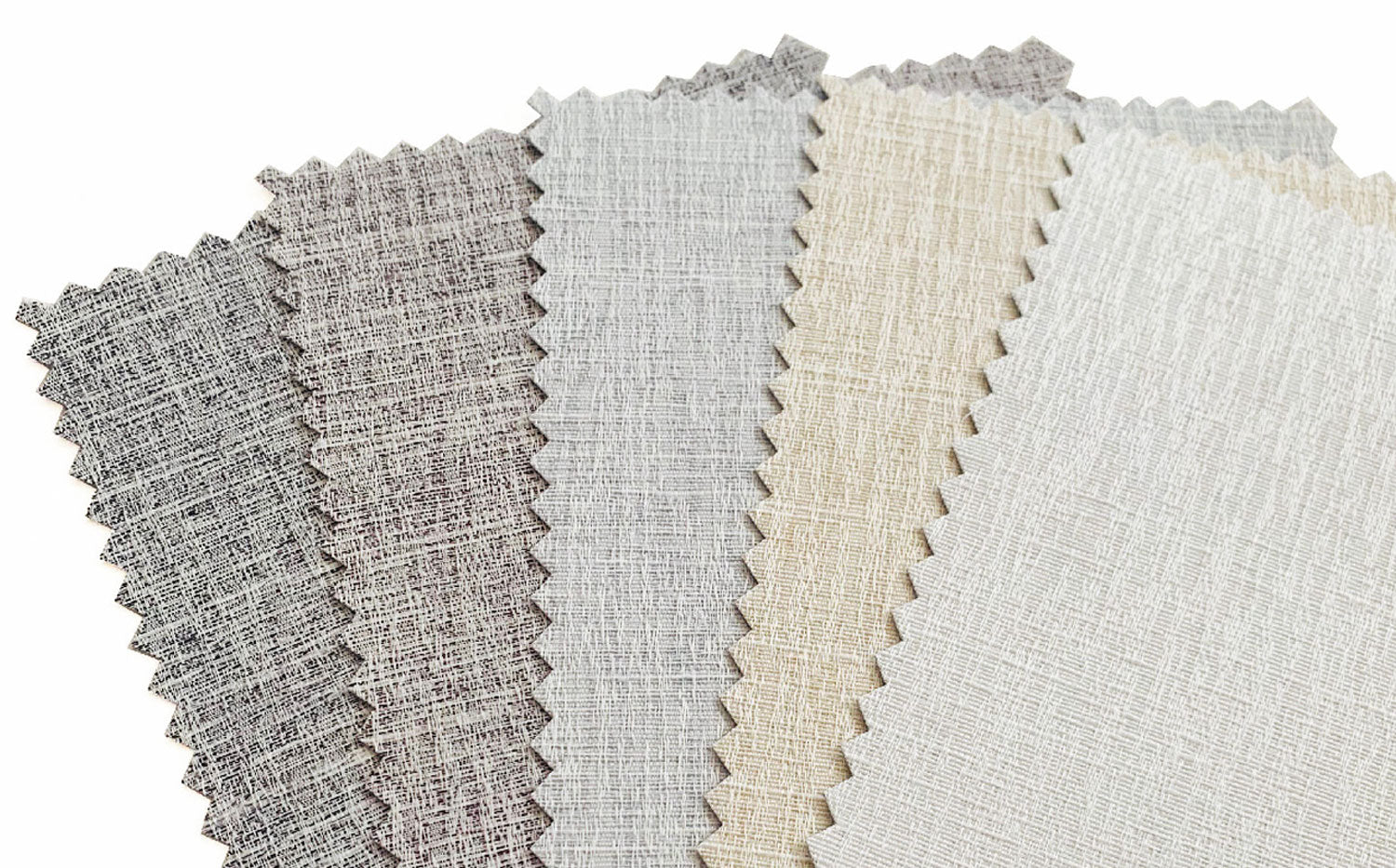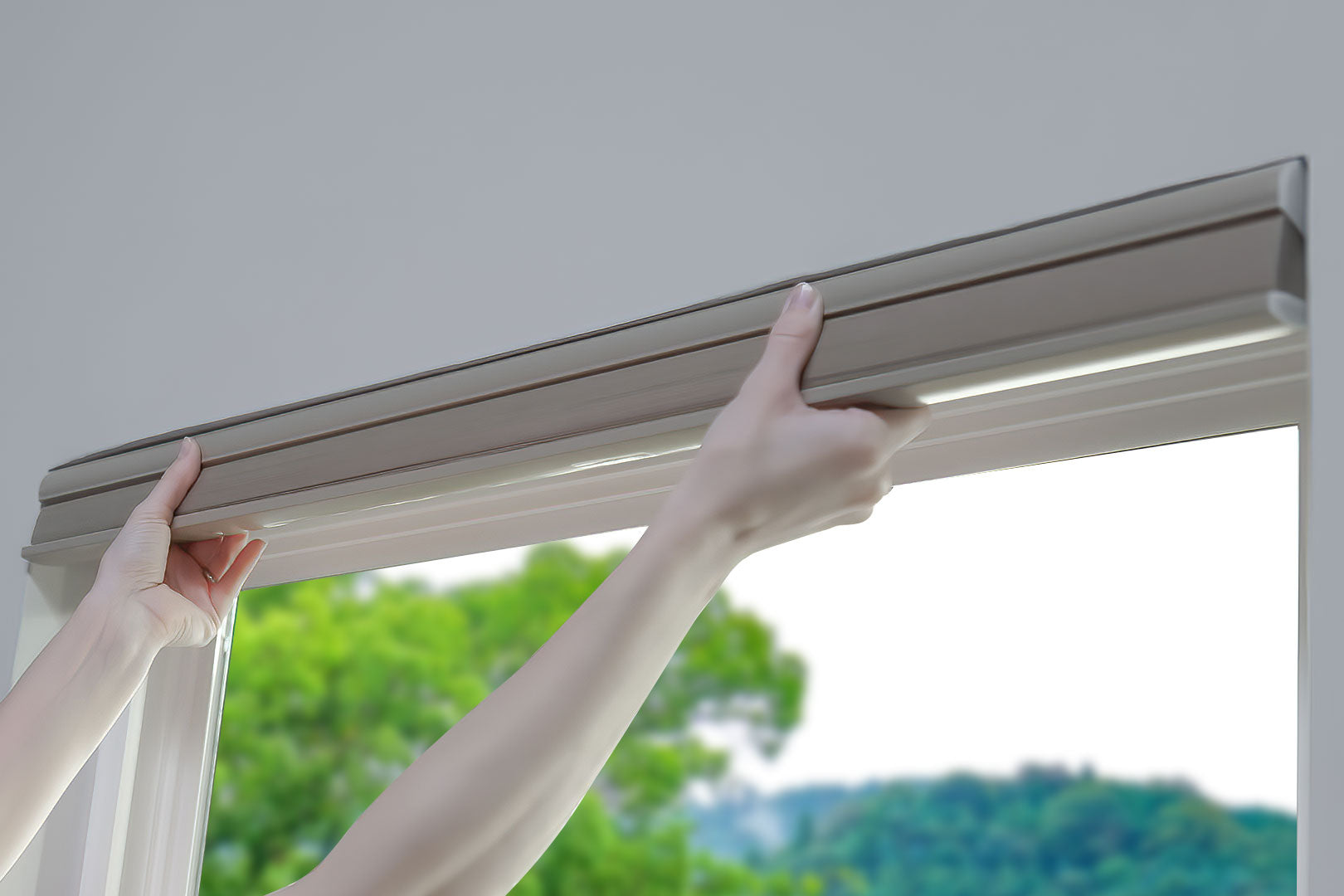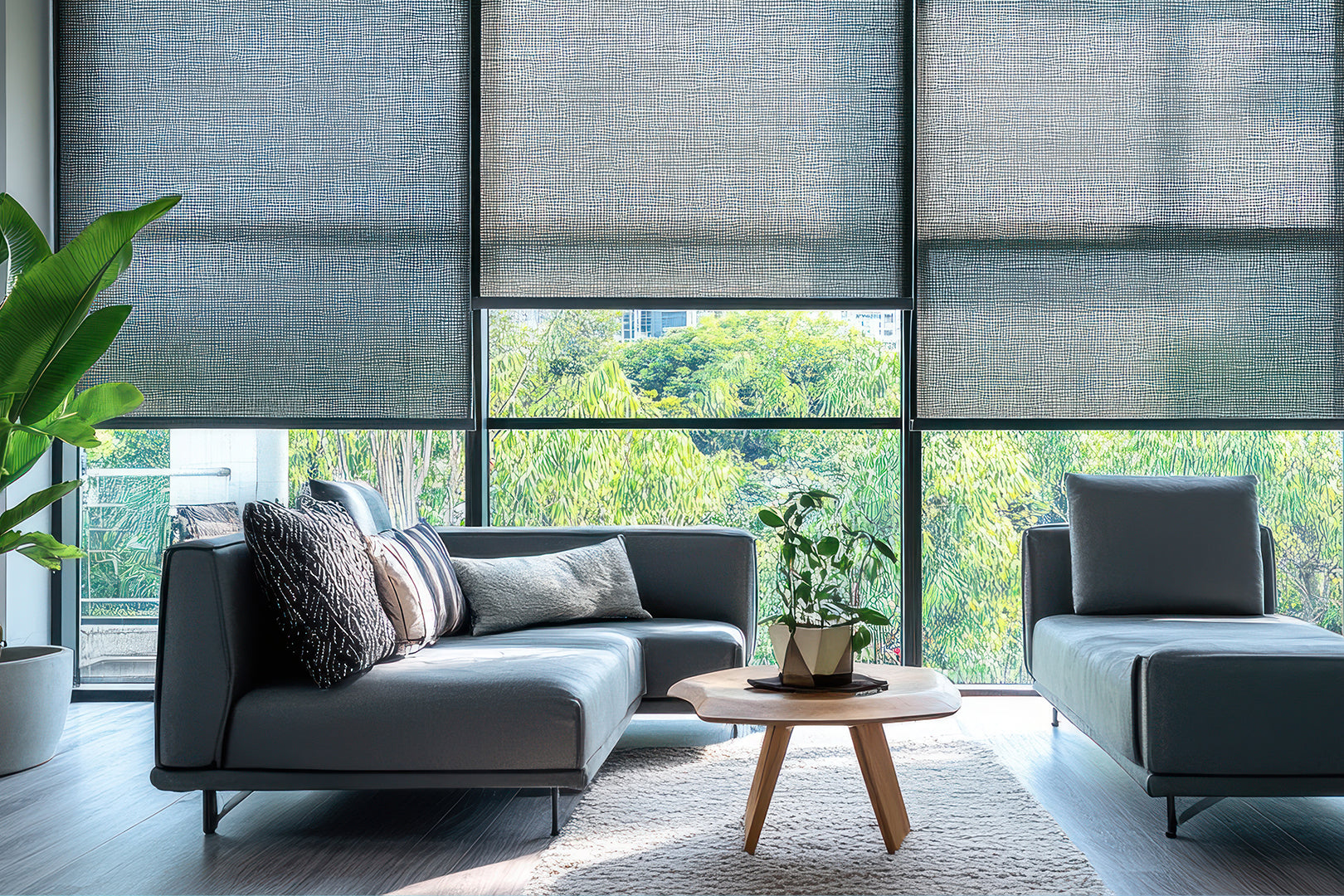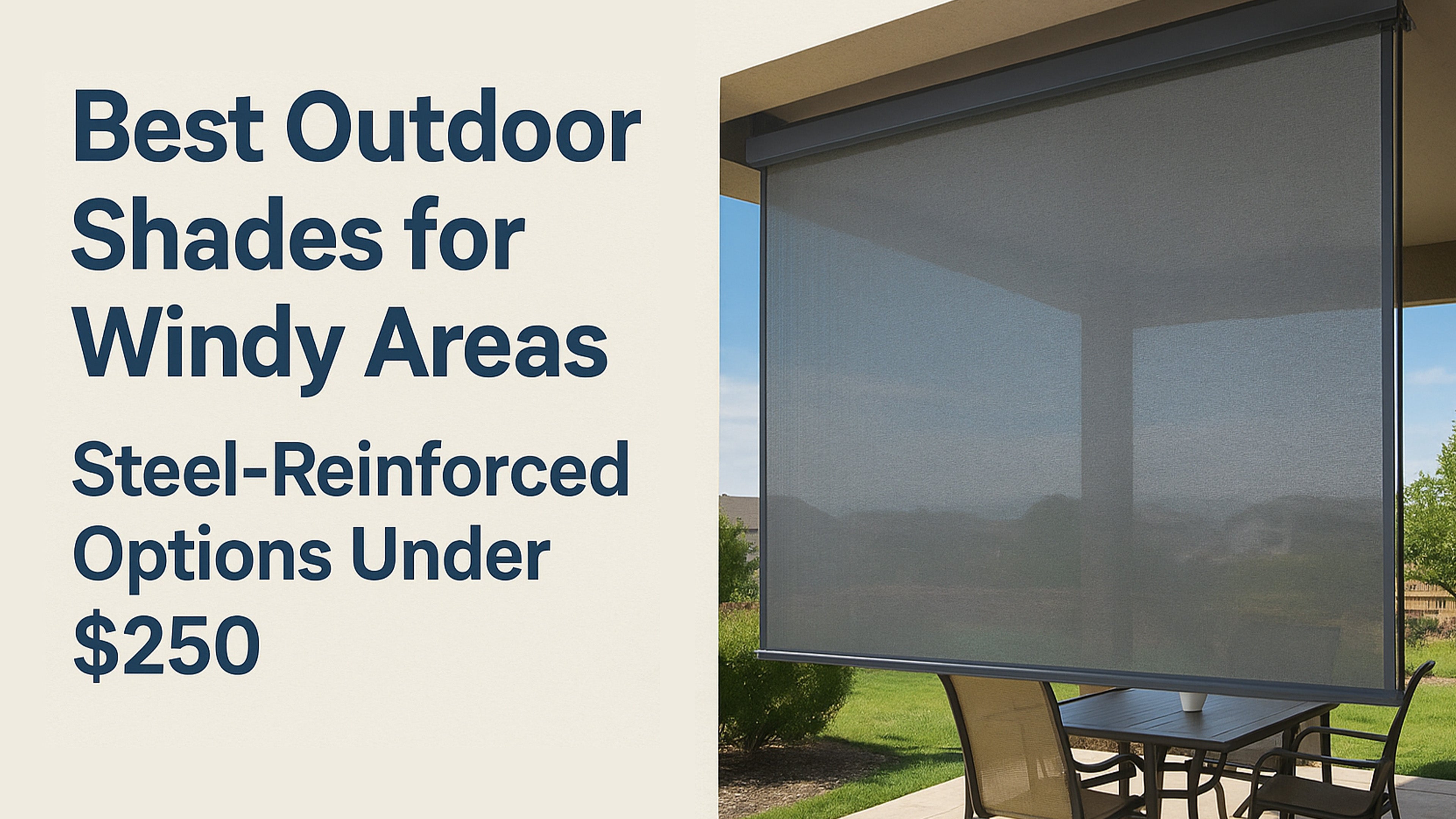
Your neighbor's outdoor shade just became a $200 kite. Again.
While they're chasing fabric across the yard, you could be sipping coffee on your perfectly shaded patio — even when Mother Nature throws a tantrum. The secret? Steel-reinforced outdoor shades built like tanks, not tissues. We tested dozens in coastal conditions where 40 MPH gusts are just Tuesday.
Here's what you'll discover:
● Why most outdoor shades fail in wind (hint: it's not just cheap fabric)
● The steel-locking mechanism that changes everything
● Real wind resistance ratings and what they actually mean
● Installation tricks that double your shade's stability
● Smart features worth paying extra for
● Our top pick: a weatherproof powerhouse under $250
BlindsMagic makes outdoor shades with reinforced steel construction that won't budge. We've installed them on beach houses where regular shades last about as long as ice cream in July. They're one of the few companies actually engineering for wind, not just hoping for the best.
Our Top Pick: A Weatherproof Powerhouse Under $250
After testing in coastal winds, desert storms, and everything in between, one shade dominated: BlindsMagic's Smart Motorized Sunscreen Outdoor Shades.

At $249.99 for standard sizes, it's the only shade under $250 that includes everything you actually need for windy conditions.
Real-World Performance

We installed these on a beachfront property that eats regular shades for breakfast. After eight months:
● Survived multiple 45+ MPH storms (verified by weather station)
● No sagging despite constant salt spray
● Fabric still looks new (that PVC-free material really delivers)
The homeowner's previous shades? Three different brands in two years, all destroyed.
The Money Math
Here's what you're actually getting for $249.99:
● Steel-reinforced construction (typically $300+)
● Smart motor with app control ($400+ from competitors)
● Professional-grade fabric ($350+ elsewhere)
● 3-year warranty (most offer 1 year)
That's $1,050+ worth of features. The catch? There isn't one.
Installation Reality Check

You'll spend 45-60 minutes installing if you're handy. The instructions actually make sense (shocking, we know). Everything's pre-assembled except mounting brackets.
Critical details they got right:
● Color-coded brackets (no guessing which side)
● Template included for perfect spacing
● All hardware included, even for masonry
Pro tip: Order the 6-channel remote for $14.99 extra if you're getting multiple shades. Controls everything from your pocket.
The Solar Upgrade Decision

For $49.99, add the solar panel. Worth it if:
● Your outlet is more than 10 feet away
● You hate remembering to charge things
● You want a true set-and-forget operation
Skip it if your shade gets less than 3 hours of sunlight daily. The standard battery lasts long enough that manual charging isn't a hassle.
Minor Limitations to Know
Being honest about what it won't do:
● Max width is 12 feet (larger needs custom pricing)
● Five color options (not 50 like some brands)
● 4-5 day shipping (not Amazon Prime)
For windy areas, those trade-offs are irrelevant. You need performance, not 47 shades of beige.
Why Most Outdoor Shades Fail in Wind
Imagine you invested in outdoor shades last spring. By fall, they're either shredded, permanently stuck at a 45-degree angle, or making that awful WHAP-WHAP-WHAP sound that drives the whole neighborhood crazy.
Sound familiar? You're not alone.
The Triple Threat of Wind Damage
Most outdoor shades fail because manufacturers treat wind resistance like an afterthought. They focus on looking good in catalogs, not surviving actual weather. Here's what kills them:
1. Flimsy Edge Construction: Standard shades use basic hemmed edges or thin plastic strips. Wind catches these edges like a sail. Once it gets underneath, game over. The fabric either tears at the seams or pulls completely free from its tracks.
2. Weak Mounting Systems: Those plastic brackets from big-box stores? They're basically decorative suggestions. Wind creates a tremendous uplift force — we're talking 20-30 pounds of pressure on a standard 6-foot shade. Plastic brackets crack. Aluminum ones bend. Your shade becomes a projectile.
3. Poor Fabric Choices: Regular outdoor fabric stretches when wet and shrinks when dry. Add wind to that cycle and you get:
○ Sagging that creates more surface area for wind to grab
○ Stress points that tear at the slightest provocation
○ Fabric that whips violently, destroying both the shade and your sanity
The Physics Nobody Talks About
Wind doesn't just push — it creates vortexes around your shade. These spinning air currents attack from multiple angles simultaneously. It's why your shade can rip on a "calm" day with occasional gusts.
Traditional shades also suffer from the billowing effect. Without proper tension and venting, fabric balloons outward. More surface area = more wind resistance = catastrophic failure.
Pro tip: If you can grab your shade's fabric and easily pull it 6+ inches from the frame, it's already too loose to survive serious wind.
The Hidden Cost of Cheap "Solutions"
We've seen people try everything:
● Bungee cords (spoiler: they snap)
● Weights at the bottom (creates more stress, not less)
● Taking shades down constantly (defeats the whole purpose)
One coastal homeowner told us she replaced her patio shades three times in two years. That's $600 down the drain, not counting installation headaches.
BlindsMagic's outdoor shades use a steel-locked bottom rail that eliminates billowing entirely. The fabric stays taut even in gusty conditions. No flapping, no stress points, no weekly shade-chasing adventures.
The Steel-Locking Mechanism That Changes Everything
Forget everything you know about outdoor shade construction. The steel-locking mechanism is the difference between shades that survive one season and ones that last a decade.
How Steel-Locked Systems Work
Traditional shades rely on weight to stay put. Steel-locked systems use active tension instead. Here's the breakdown:
The bottom rail contains a solid steel core (not hollow aluminum). This core locks into reinforced side channels using spring-loaded pins. When the wind hits, the entire shade acts as one rigid unit rather than loose fabric flapping around.
Regular shades are like a bedsheet on a clothesline. Steel-locked shades are like a stretched canvas. Which one's winning against the wind?
The Engineering Behind Wind Resistance
Steel-locked shades distribute force across three critical points:
● Top mounting (handles downward pull)
● Side channels (prevents lateral movement)
● Bottom lock (eliminates lifting and billowing)
This triangulated support means wind pressure gets absorbed evenly. No single point takes all the stress. No weak links to fail.
The math: A 6x8-foot shade in 40 MPH wind faces roughly 35 pounds of force. Steel-locked systems spread this across 12+ connection points. Each point only handles 3 pounds — well within safety margins.
Installation That Actually Matters
Even the best steel-locked system fails with sloppy installation. The key differences:
● Surface mounting depth: You need at least 2.5 inches of solid material (wood, concrete, or properly backed siding). Anything less and you're just rearranging deck chairs on the Titanic.
● Channel alignment: Side channels must be perfectly plumb. Even a quarter-inch deviation creates gaps that wind exploits. Use a 4-foot level, not the tiny one in your toolbox.
● Bottom clearance: Leave exactly 1/4 inch between the bottom rail and the mounting surface. Too tight = binding. Too loose = wind gets underneath.
Real Wind Resistance Ratings and What They Actually Mean

Marketing departments love throwing around impressive numbers. "Rated for 75 MPH winds!" Sure, in a laboratory with perfect conditions and zero sustained gusts.
Let's decode what these ratings actually tell you.
Understanding Wind Rating Standards
Real wind resistance involves three measurements most manufacturers conveniently ignore:
● Sustained Wind Speed: This is constant wind pressure over 10+ minutes. A shade rated for "50 MPH" might only handle 30 MPH sustained. That's the difference between surviving and shredding.
● Gust Factor: Gusts hit 1.5-2x harder than sustained winds. Your "50 MPH rated" shade needs to actually handle 75-100 MPH gusts. Most don't even come close.
● Pressure Coefficient: Wind pressure increases exponentially with speed. 40 MPH wind creates 4x more pressure than 20 MPH wind. Not double — quadruple.
What You Actually Need
Here's the no-BS guide to ratings based on your location:
|
Your Situation |
Minimum Rating Needed |
Why |
|
Protected patio, occasional breeze |
30-40 MPH sustained |
Basic protection sufficient |
|
Open yard, suburban area |
40-50 MPH sustained |
Accounts for wind funneling |
|
Coastal property, hilltop |
60+ MPH sustained |
Constant exposure demands more |
|
Hurricane zones |
75+ MPH with removal plan |
No shade survives Category 3+ |
Testing Methods That Matter
Legitimate manufacturers test with:
● Wind tunnel verification (not just calculations)
● Cyclic loading (repeated stress, not one-time)
● Wet conditions (fabric performs differently when soaked)
BlindsMagic's outdoor shades undergo 500+ cycle testing at their rated wind speeds. That's equivalent to five years of serious weather exposure. The steel-locked design maintains full tension throughout, while the weatherproof fabric resists UV degradation and mold.
Quick reality check: If a company won't share its actual test data, they're hiding something. Always ask for certification documents.
Installation Tricks That Double Your Shade's Stability
You could buy the world's strongest shade and still watch it sail away if you botch the installation. These field-tested tricks make the difference between bulletproof and "there goes the neighborhood."
The Foundation Makes or Breaks Everything
Wood Surfaces: Pre-drill pilot holes 1/8" smaller than your screws. Sounds basic? We've seen countless shades fail because installers skipped this step. Wood splits, screws loosen, shade flies.
For extra holding power:
● Inject polyurethane glue into pilot holes before screwing
● Use stainless steel lag screws, minimum 2.5" long
● Add backing plates behind single-layer siding
Masonry/Stucco: Forget those plastic anchors that came in the box. Use sleeve anchors rated for 500+ pounds. Drill holes 1/2" deeper than the anchor length — dust accumulation reduces holding power by up to 40%.
Vinyl/Aluminum Siding: Never mount directly to siding. Cut small access holes, mount to the actual structure behind, then seal with color-matched caulk. Yes, it's more work. No, your shade won't end up in the neighbor's pool.
Strategic Reinforcement Points
The corners take the most abuse. Here's how to bombproof them:
1. Double up the brackets at the top corners (installers often skip this)
2. Install brackets 4-6 inches from shade edges, not right at the edge
3. Add a center support bracket for shades wider than 8 feet
Wind tunnel secret: Shades fail at mounting points 3x more often than fabric tears. Overbuilt mounting = cheap insurance.
The Wind-Break Installation Method
Position matters as much as hardware. Install shades with:
● 2-degree forward tilt (water runs off, wind deflects up)
● Side gaps under 3/8" (tighter = better, but allows for expansion)
● Bottom rail 1/4" above ground (permits drainage, prevents rust)
For maximum stability, create a wind shadow using existing structures. Mount 6-12 inches away from walls rather than flush. This creates a pressure buffer zone that reduces wind load by 25%.
The Pro's Final Touch
After installation, run this stability test:
1. Grab the bottom rail center
2. Pull outward with 15-20 pounds of force
3. Side channels shouldn't gap more than 1/8"
4. Top mount shouldn't flex visibly
If anything moves excessively, fix it now. Wind will find every weakness.
Smart Features Worth Paying Extra For
Not all upgrades are designed the same. Some "premium" features are just marketing fluff. Others transform your shade from basic protection into a weather-beating fortress.
Motor Intelligence That Matters
Skip the basic motors. You want smart motors with:
● Wind Sensors ($100-150 extra)
Automatically retract shades when wind exceeds preset limits. Not just convenient — it's shade life insurance. Set it for 35 MPH and stop worrying about surprise storms.
● Obstacle Detection ($50-75 extra)
Motor stops if something blocks movement. Prevents damage from furniture, toys, or that plant you forgot about. Also saves the motor from burning out trying to close against jammed debris.
● Battery Backup with Solar ($50 for solar panel)
Power outages happen during storms — exactly when you need shade control. Solar panels keep batteries topped off indefinitely. BlindsMagic's solar kit maintains a charge even with just 2-3 hours of indirect sunlight daily.
Fabric Upgrades That Pay Off
● PVC-Free Weatherproof Fabric ($20-30 more)
○ Resists mold, mildew, and UV degradation 5x longer than standard outdoor fabric. Stays dimensionally stable when wet (no sagging). Cleans with just a hose.
● Higher Density Weave (Worth every penny)
○ Tighter weaves resist wind penetration. Look for:
■ 300+ GSM (grams per square meter) minimum
■ Solution-dyed fibers (color won't fade)
■ Locked-stitch edges (won't unravel)
Structural Reinforcements
● Heavy-Duty Side Channels ($40-60 extra)
○ Upgrade from standard 1.5" to 2.5" channels. Deeper channels = better wind resistance. The extra inch makes a shocking difference in 40+ MPH conditions.
● Steel Core Bottom Rail (Non-negotiable for windy areas)
○ Aluminum rails bend. Steel stays straight. The weight difference is minimal, but the performance gap is massive. This isn't where you save money.
The Integration Advantage
Smart home compatibility runs $30-80 extra, depending on the system. Worth it for:
● Scheduling (auto-close before typical wind times)
● Weather integration (connects to local forecasts)
● Group control (manage multiple shades instantly)
BlindsMagic shades work with Alexa, Google, HomeKit, and SmartThings out of the box. Set up a "storm mode" scene that retracts all shades with one command. Or schedule them to close during peak afternoon winds automatically.
Bottom line: Spending 20-30% more on the right features saves you from replacing shades every other year. Do the math.
Ready to Wind-Proof Your Patio With BlindsMagic?
Wind doesn't have to dictate your outdoor comfort anymore. With steel-reinforced construction and smart installation, you can finally have shades that stay put through actual weather.
Key takeaways:
● Most shades fail from weak edges, poor mounting, and billowing fabric
● Steel-locked bottom rails eliminate 90% of wind damage
● Proper installation doubles your shade's lifespan
● Smart motors with wind sensors are worth the extra $100
● Spending 20-30% more upfront saves on constant replacements
BlindsMagic engineered their outdoor shades specifically for people tired of the annual shade replacement ritual. Their steel-locked system with smart motors means you set it up once and forget about it — even when those afternoon gusts kick up to 40 MPH.

